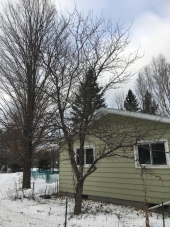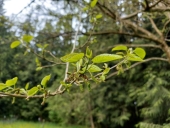posted 12 years ago
Thanks for your answers!
That's much more than 1 tree, so boiling logs and compost is technically excluded.
My 2 places where burying wood was possible is already done.
phytophthora (one sure disease very common here)
is supposed to come with water and infect through roots,
that is why I am not fond of burying like this...
At the moment, as I have a still unplanted little place near this wood (steep place!),
the idea is to partially burn them (the outside), so that heat kills what it can,
while retaining some carbon for next use, and then let it rot.
I just do not know how much is needed to reach enough temperature inside the wood...
Who kills who is just what I would like to be sure about!
I do not want to let wood out and let them rot unless there is real factual evidence about the way the "bad guy" fight for survival.
Any data about this is welcome...
Xisca - pics! Dry subtropical Mediterranean - My project
However loud I tell it, this is never a truth, only my experience...





